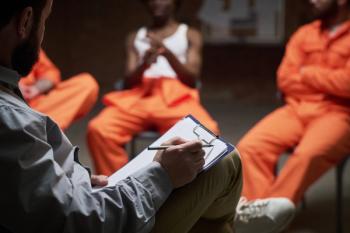
The Seven Myths of Mass Murder
It is important to note public misconceptions about the rare and frightening act of mass murder. This article sheds some light on what the author considers the 7 myths of mass murder.
For the past 15 years, my colleagues and I have conducted research on adolescents and adults who commit mass murder (see our
Now that the anniversary of the
Myth 1: They “snap”
Immediately following a mass murder, there is a steady stream of newspaper headlines and what I call “entertainment profilers” who appear on television and proclaim that the perpetrator “snapped.” There is no known psychological term called “snapping,” but it appears to be the assumption of many that anyone who commits a mass murder has done it impulsively, without any planning or preparation, and has completely lost control. The hidden premise is that anyone who gave such behavior any thought, even if emotionally troubled, would not engage in such behavior, since it is so horrifying and antithetical to the general goodness of the human spirit.
This is a myth in virtually all mass murders. Our research, and others’ studies, have consistently shown that mass murderers, whether adolescents or adults, will research, plan, and prepare for their act of targeted violence over the course of days, weeks, and even months. In fact, the fantasy of committing a mass murder may have been incubating in the mind of the mass murderer for years-even though the time, place, and target of the killings was not yet determined by him.
The act itself usually occurs after there has been a major loss in love or work, and I think this may actually “start the clock” for final detailed preparations. I have forensically evaluated a number of mass murderers in prison or forensic hospitals, and with few exceptions, there was no evidence of a high state of emotional arousal when the killings occurred. We have confirmed this by studying the interviews of witnesses who have survived mass murders, and they invariably describe the shooter as cool, calm, and deliberate: a lack of emotion that is a corollary of violence that is planned and purposeful.
Myth 2: They can easily be divided into “psychopaths, psychotics, and depressives”
David Cullen, the journalist and author of Columbine, an excellent book on the high school mass murder in Colorado in 1999, has asserted this formulation. Unfortunately, his diagnostic classification of these individuals is much too simplistic. Most of those we have studied in our research, and I have evaluated for court purposes, are complex in their motivations and psychopathology and cannot be placed in such simple categories. In our language, they often have both mental disorders and personality disorders.
Mental disorders range from chronic psychotic disturbances, such as paranoid schizophrenia diagnosed in the Jared Loughner case, to major depression, other depressive disorders, bipolar disorders, and other paranoid disorders, such as persecutory delusional disorder. Fully understanding the range and complexity of these individuals’ disturbances is critical.
Personality disorders also abound in this group of dangerous individuals. We have found that personality disorders in mass murderers are often a mixture of antisocial, paranoid, narcissistic, and schizoid traits-someone who habitually engages in criminal behavior, is suspicious of others’ actions, is self-centered and grandiose with little empathy for others, and is chronically indifferent toward others and detached from his emotional life. It takes little imagination to see how such an individual, in the right circumstances, could intentionally kill others.
What Cullen has done is a disservice to the millions of individuals in the US and overseas who are clinically depressed or have a psychotic disorder, and pose no more risk of violence to others than your neighbor who is ostensibly normal. I have told a number of groups when I speak that Jared Loughner has given paranoid schizophrenia a bad name-many other factors contributed to his attempted assassination and mass murder. Schizophrenia is quite treatable with medication and other psychotherapeutic support, and few people with schizophrenia are violent.
Myth 3: Incidents of mass murder are increasing
When a mass murder occurs, it receives worldwide news coverage that is instant and pervasive. Unfortunately, we human beings are prone to overestimate the frequency of an event by its prominence in our minds, and mass murder is no exception. This is a very rare phenomenon, and is neither increasing or decreasing in the US. Since 1976, there have been about 20 mass murders a year. Casualty numbers vary considerably with each event, and typically the more people killed, the more press coverage the event receives. Violence sells: 2003 was the most violent year for mass murder, with 30 incidents and 135 victims. One of the quietest years for mass murder was 2001-if the 9/11 terrorist attacks are not considered.
The Washington Navy Yard, Virginia Tech,
Myth 4: Firearms are not an issue
Of course they are. They are the means by which people can easily kill themselves and others. Mass murders are typically committed with firearms or explosives, whether in the US or internationally. Perpetrators usually bring 2 or 3 firearms to the scene of their massacre. Assault weapons were the killing instruments in both Aurora, Colorado, and
Between 1994 and 2004, when the federal assault weapons ban was in effect, there was no decrease in the average number of mass murders per year; however, there were no studies as to whether there was a specific decrease in the use of assault weapons in such crimes. The trend line remained flat. However, limiting firearms capacity would likely reduce the number of casualties at any one massacre-Jared Loughner was tackled by 3 senior citizens in Tuscon when he attempted to reload. What should be center stage is regulation of firearms. It is more difficult to buy the over-the-counter drug Sudafed than a semi-automatic pistol.
As a gun owner, and a supporter of the 2nd amendment, I find it appalling that virtually anyone can purchase a firearm with little effort, money, or time in the US. Can we drive an automobile without a license? Do we have to demonstrate competency in its use before we can obtain a driver’s license? Can automobiles be utilized as lethal weapons through negligence or intent? Affirmative. I would much rather have a drunkard riding a bicycle than driving a car in our neighborhood. I think firearms ownership is a right with limits (as most US Constitutional rights are): demonstrable competency in firearm use and mental stability.
Myth 5: Psychotic individuals cannot plan in a precise and methodical manner
Although this may seem an academic point, when it comes to mass murder, it has been disproven time and time again. The majority of adult
Myth 6: It must be the drugs they are abusing
It is true that most violence involves drug use, particularly alcohol. In cases of spousal homicide, either the victim or perpetrator, or both, are often intoxicated at the time. In mass murder, however, drug use is minimal, whether alcohol or other illicit substances. We think the reason for this counterintuitive finding is that the mass murderer does not want any drugs to cloud his consciousness at the time. Drugs would interfere with his planning, preparation, and most importantly, his tactical success, which is often to maximize his casualty rate. We have even found that in 2 cases the mass murderer had utilized therapeutic amounts of sedating drugs-benzodiazepines or phenobarbital-to help him remain calm during the shooting: data gathered from toxicology reports following the perpetrator’s autopsy.
Myth 7: Mass murder can be predicted
Unfortunately this will never happen given the simple fact that we cannot predict such an extremely rare event. If we attempt to do so, we will grossly overpredict its occurrence, and perhaps infringe on the freedoms and the rights of those wrongly accused, or the population at large. However, we can risk mitigate such events by paying attention to behaviors of concern. “If you see something, say something.”
This stopped Richard Reid from bringing down an airplane over the Atlantic in December of 2001, when a passenger sitting next to him noticed he was trying to light his sneaker with a match. It contributed to the prevention of another ideologically driven mass murder in Times Square on May 1, 2010, when 2 street vendors noticed a suspicious van parked on a busy corner and alerted the police-2 days later law enforcement arrested Faisal Shahzad at Kennedy airport as he sat onboard a plane bound for Dubai.
Such situational awareness is critical to interdict someone in the final stages of an attack. But there is another warning behavior that is quite frequent: mass murderers, both adolescents and adults, will leak their intent to others. This leakage has been defined by us as the communication to a third party of an intent to attack a target; put more simply, it is a phrase expressed to another, or posted on the internet, that raises concern. It may be overt: “I’m going to kill my supervisor and his cohorts tomorrow”; or it may be covert: “don’t come to work tomorrow, but watch the news.” The logical consequence of such comments should be to alert someone in a position of authority; however, most people don’t. The sad reality is that the leakage surfaces after the event, with the rationale, “I just didn’t think he was serious.” Words matter. Trust your emotional reactions of anxiety, wariness or fear; clinically probe for more objective data as to whether or not the threat is serious; and exercise your legal obligations and best treatment practices to mitigate risk.
Summary
Mass murder specifically, and gun violence in general, is a hard problem in the US: its difficulty is matched by its importance. The way forward may be to treat gun violence as both a criminal and a public health problem, with primary prevention focusing upon risk factors in the general population (poor public mental health care, lax regulation of firearms, no demonstration of competency to purchase or use a firearm); and secondary prevention focusing on individuals of concern who may be planning or preparing an act of targeted violence. In the latter case, behavioral threat assessment may offer the best hope, where prevention is the goal rather than prediction.
Along these lines, the American Psychological Association’s
[Editor's Note: An earlier version of this article appeared on the Oxford University Press (OUP) blog.
Disclosures:
Dr Meloy is a forensic psychologist and the co-editor of the
Newsletter
Receive trusted psychiatric news, expert analysis, and clinical insights — subscribe today to support your practice and your patients.













